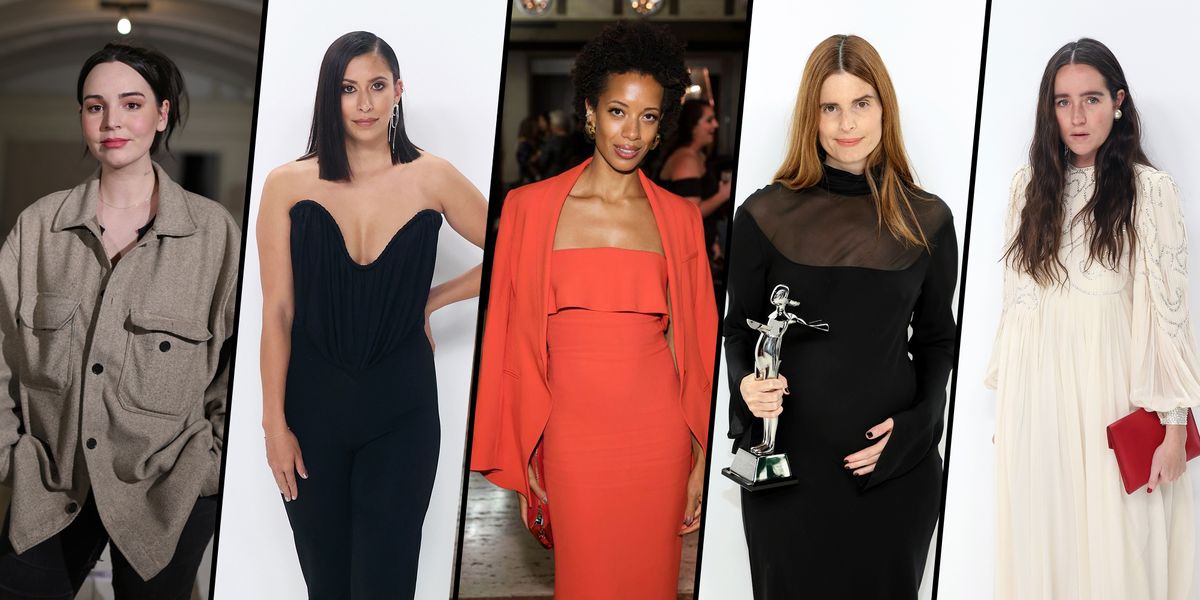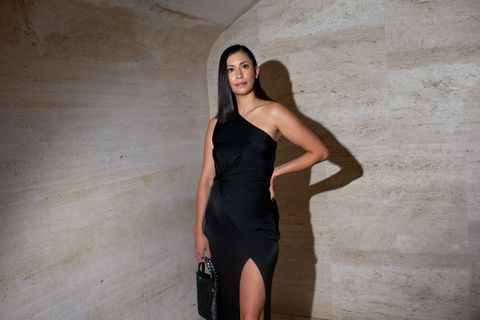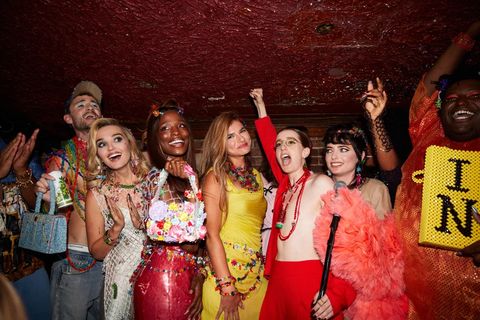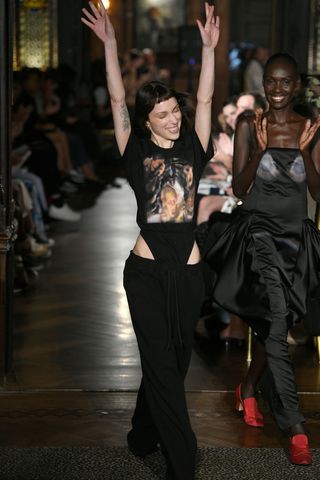Michelle Ochs would like to propose a vibe shift.
“In 2023, can we please swap ‘French Girl Style’ for ‘American Woman Style?’” asks the New York designer, who counts Blake Lively and Lupita Nyong’o as fans. “Honestly, I think it’s funny that people think French Girl is a genre, but not American Woman. I want to represent us in that way. If the French Girl is aggressively understated, the American Woman is the one who’s power dressing, who has places to be and needs to get there on time, looking strong and smart. I think in 2023, American Woman Style is going to rule.”
She’s really onto something. In the past few months, female designers have conquered the CFDA Awards, which are considered a State of the Union for America’s style industry. For the first time ever, women scored three out of the four main design awards at the annual ceremony—Womenswear Designer of the Year (Catherine Holstein of Khaite), Menswear Designer of the Year (Emily Bode of Bode), and Emerging Designer of the Year (Elena Velez). California-casual mogul Emma Grede and jeweler Lynn Stark also picked up trophies as part of larger design teams. Meanwhile, labels led by American women had a record year in retail, reporting larger orders from global style hubs like SSENSE and Net-a-Porter, and increased red carpet requests from A-list stylists. In the mass market, Olympia Gayot has pushed uber-American outfitter J.Crew back to buzzworthy status thanks to her “everyday, elevated” ethos.
Those successes are all very real. They’re also coming at a time when wage gaps and investment biases uphold a glass ceiling that can feel unbreakable to many women in American fashion—even when armed with a pair of Brother Vellies spike heels. After all, just 2.3 percent of all venture capital money funds female-led brands, according to the Harvard Business Review. McKinsey reports that most finance jobs continue to be held by men, and Time notes that women are still outnumbered in MBA programs (a “record” number is still under 50 percent). “I’ve been told my business looks ‘flimsy’ and ‘anchorless’ without a man on board,” says Susan Korn, the downtown artist behind the viral accessories brand Susan Alexandra. “It’s very cool to say you support women and people of color, but when it comes to writing checks, I’ve found that VC funds find us ‘risky’ as investments. It makes me want to scream, of course. But it also makes me very excited to prove them wrong.”
Carly Cushnie agrees. The CFDA board member (and one-time partner with Michelle Ochs) had won industry awards, secured retailers like Net-a-Porter and Farfetch, and dressed everyone from Rihanna to J.Lo. Then she met the head of a major European fashion conglomerate looking to invest in American talent. “He looked over our sales and said, ‘You’re doing far better than the other designer we’re looking at…you’re doing everything right!’” A few months later, the fashion mogul invested in that “other designer,” a man. “He literally said we had everything going for us, and it didn’t matter! I was like, ‘Is this because I’m a woman? Because I’m Black? Both?’ I was mystified,” Cushnie sighs, noting that she later heard the mogul extoll his belief that male designers are more creative “because they have to imagine being in a woman’s body to design for it!” she laughs. “Obviously, we have to be more creative to make clothes that work in our real lives, and that’s why people love our clothes.”
The pride in making pieces for their own lives is a thread that recurs often during these female-centric conversations. “Everything I make, I ask, ‘Would I wear this?’” says Carly Marks, the creative director of Puppets & Puppets, whose downtown slink dresses are the unofficial uniforms of Lucien. “Whereas when a guy makes clothes, he thinks, ‘Would I like the way a woman looks in this outfit?’ And that’s still what’s getting funding! It’s funny, because it’s not a joke.”
Adds Collina Strada’s Hillary Taymour, “65 percent of our sales right now are pants. A lot of our repeat customers tell me, ‘I was afraid to try on designer clothes before you, because they make me feel like my body doesn’t belong.’ These pieces are the fabric equivalent of a safe place…and I started designing because I needed that, too.” That instinct and trust has earned Taymour a healthy surge in revenue, along with Gucci and Marni collaborations. Meanwhile, Marks recently secured orders from overseas retailers like Browns Fashion and Selfridges in London, as well as several notable South Korean boutiques. “I think being a New York girl, they know there’s something cool and brave behind the designs. Everyone wants a piece of that. So I will fight to make sure that even if I’m overlooked for funding or investment, I’m never overlooked creatively.”
CFDA winner and Wisconsin native Elena Velez is even more candid when asked for her take on the gender gap in American fashion success. “Unfortunately, I have way more urgent fires to put out,” she says. “To be blunt, regardless of whether the dice is weighted, I’ve never been under the illusion that the game was going to be fair.” Of course, that imbalance goes both ways: Many designers lack large cash infusions or blind faith from legacy houses. Still, others lack the hypnotic ingenuity and oh-my-gosh-I-need-that appeal that designers like Velez bring to every piece. Let’s call it a woman’s touch.

Editor at Large, ELLE.com
“Her beauty and her brain go not together.” —William Shakespeare




